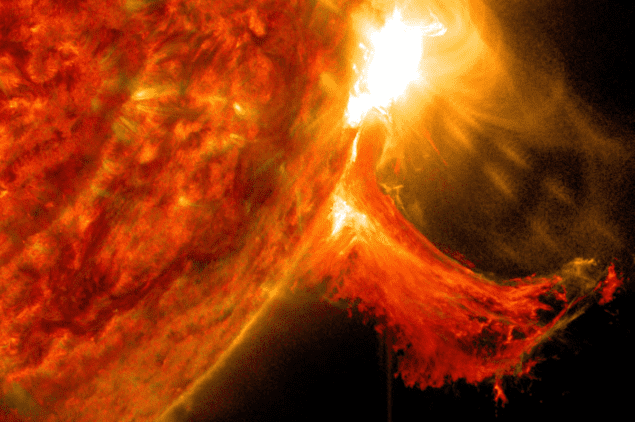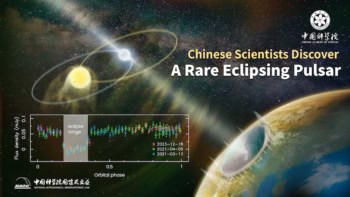
An intense blast of high-energy protons from the Sun pummelled the Earth in about 660 BC and left a distinct record of cosmogenic nuclei in the Greenland ice sheet. The discovery was made by an international team of scientists who say the event was one most powerful solar storms known to have struck Earth.
The team calculates that the storm was about ten times more intense than any event that has occurred in the past 70 years. “If that solar storm had occurred today, it could have had severe effects on our hi-tech society”, says Raimund Muscheler of Sweden’s University of Lund, who designed the study.
Our research suggests that the risks are currently underestimated. We need to be better prepared
Raimund Muscheler
The discovery could also mean that huge solar storms are more common than previously thought: “Our research suggests that the risks are currently underestimated. We need to be better prepared,” says Muscheler.
A solar storm can occur when large numbers of highly-energetic protons are ejected from the Sun in solar flares or coronal mass ejections. Under certain conditions determined by where the event occurs on the Sun and the configuration of the interplanetary magnetic field lines, these particles can be directed towards Earth.
Wreaking havoc
Solar protons are normally deflected by Earth’s magnetic field, but high-energy protons can penetrate this shield and enter the atmosphere. These protons will ionize gas molecules, and the sudden presence of large numbers of charged particles in the atmosphere will wreak havoc with the Earth’s magnetic field.
This can lead to huge electric fields building up in the atmosphere and on the surface of the Earth. This can disable electricity grids, telecommunications networks, GPS and electrical and electronic systems aboard aircraft. To make matters worse, the energy deposited by charged particles in digital devices could impede their operation.
In this latest research, Muscheler and colleagues looked for evidence of intense solar storms in two ice cores taken from the Greenland ice sheet. When solar protons collide with molecules in the atmosphere, cosmogenic nuclei such as beryllium-10 and carbon-14 are produced. These isotopes become trapped in the ice sheet and measurements of their abundances can be used to calculate the intensity of solar protons in the atmosphere at the time of deposition.
Oak tree rings
In 2017, some of the team members discovered a peak of carbon-14 at about 660 BC in oak tree rings. Similar peaks are associated with intense solar storms believed to have occurred more recently in the years 775 and 994. However, the carbon-14 peak at 660 BC is not as distinct as peaks associated with the later events and could be the result of an increase in cosmic rays entering the atmosphere rather than solar protons.
To clarify the situation, Muscheler and colleagues looked at beryllium-10 abundance in ice cores and found peaks at around 660 BC in ice from both the North Greenland Ice Core Project (NGRIP) and the Greenland Ice Core Project (GRIP). A peak in the abundance of chlorine-36 – another isotope produced by solar protons – was also spotted in the GRIP data.

Space weather: it’s all about impact
According to the team, the storm in 660 BC was comparable to the 775 event, which is the strongest solar storm known to date. Furthermore, the ancient storm was ten times more intense than any solar storm that has occurred over the past 70 years – including storms that have disrupted electricity grids and telecommunications.
Although such storms are rare, the discovery of a third event suggests that they could be much more common than previously thought. Muscheler believes that there should be a reassessment of the threat and calls for a greater awareness of how vulnerable society is to disruption by solar storms.
The research is described in Proceedings of the National Academy of Sciences.



